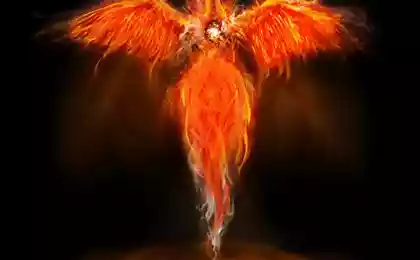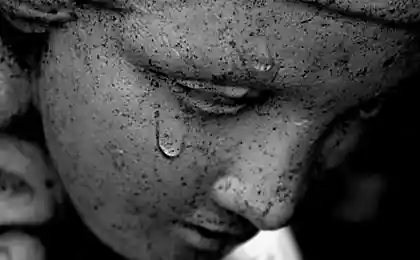903
What do we know about poisons
The poison - a substance that when ingested causes a disturbance of the process of life. And a lot of these substances. Below I will tell you about some of them:
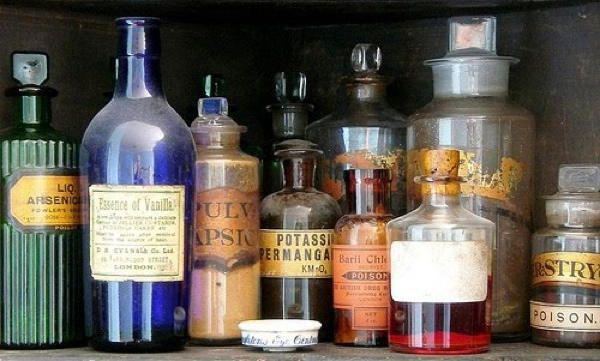
1.Tsianid hydrogen
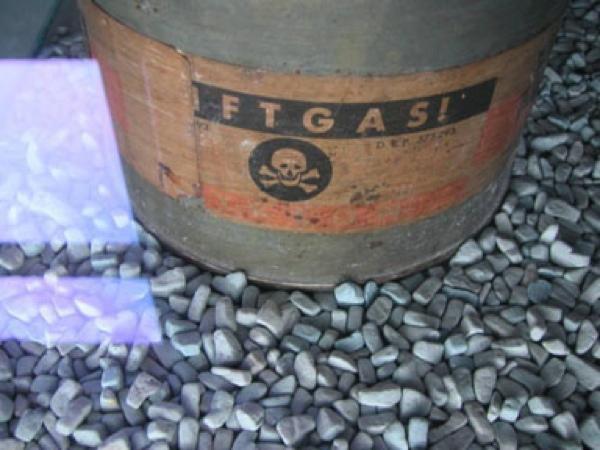
Despite the terrible glory, cyanide has a rich and fruitful history. Some scientists even believe that he may have been one of the chemicals responsible for life on earth. Today he is best known as an agent of death, the active ingredient in Zyklon B, which the Nazis used for the extermination of Jews in gas chambers. Cyanide is a chemical used as capital punishment in the gas chambers of the United States. Those who come into contact with him, say that it smells sweet almonds. Cyanide kills by binding to the iron in our blood cells, taking away their ability to carry oxygen throughout the body. In most states, the United States had banned the use of the gas chamber, as too inhumane measure. Death can take a few minutes, and often terrible to watch as the convict beats in an attempt to prevent the death.
2. Hydrofluoric acid

A solution of hydrogen fluoride in water, hydrofluoric acid, are used in several industries such as steel and even in the manufacture of PTFE. There are acids, which are much more powerful than hydrofluoric, but few of them are dangerous to humans. In gaseous form, it can easily burn eyes and lungs, but in liquid form it is particularly insidious. When exposed to human flesh, it did not initially brings pain. The fact that it does not hurt, means that people may be exposed to grave danger, without even realizing it. It penetrates through the skin into the bloodstream where reacts with the calcium in the body. In the worst case, can seep through the fabric and ruin the major bones.
3. batrachotoxin
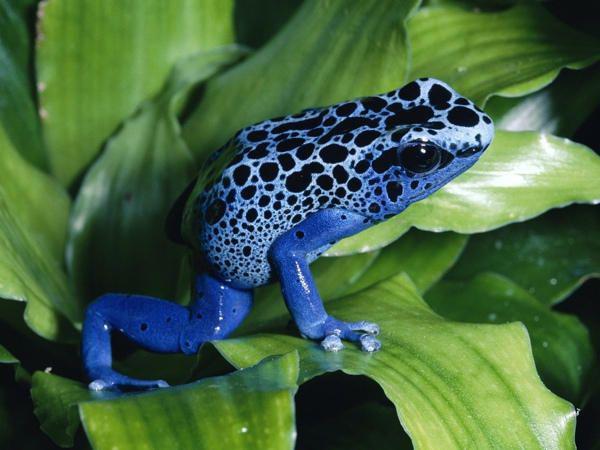
Fortunately for most of us, the chances of coming into contact with batrachotoxin extremely small. One of the most powerful neurotoxin in the world, it is the skin of tiny poisonous frogs drotikovyh. Frogs do not themselves produce the poison, it is created from the food that they eat, most likely kind of tiny beetles. There are several different versions depending on the species, but the most dangerous is the golden poison frog from Colombia. This little creature is small enough to fit on a finger tip, but one frog batrachotoxin enough to kill about two dozen people, or a pair of elephants. The toxin acts, affecting the nerves, opening the sodium channels and causing paralysis, essentially cutting off communication ability of the whole body with himself. There is no known antidote, and death comes quickly.
4. nerve gas VX
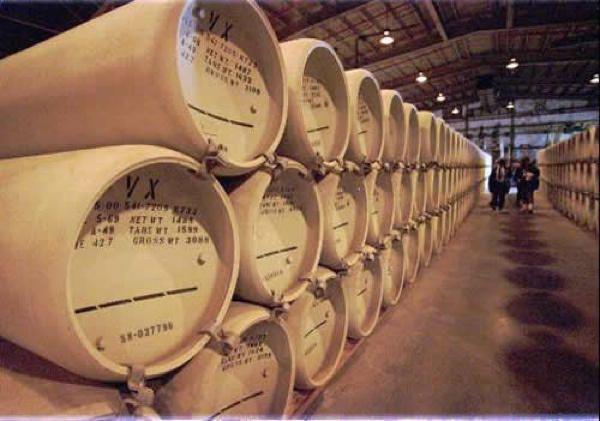
Prohibited Chemical Weapons Convention of 1993 (the world's reserves are being phased out), VX nerve agents is the most powerful gas in the world. He was found by accident in 1952 when a chemical test organophosphates, and soon was discovered and its danger. He originally went on sale as a pesticide called Amiton, but was withdrawn from sale because it was too dangerous to society. He soon attracted the attention of governments around the world, and, as it was during the Cold War had been stockpiled for potential use in the war. Fortunately, the draw hand did not tremble, and VX was never used in combat. Sectarians of the Japanese group Aum Shinrikiyo managed to create some volume of this gas and using it to kill a man, but it is the only known human death from VX. The substance works by stopping the production of the enzyme in the nerves, resulting in constant activity occurs "storm" in the nervous system that quickly overwhelms the body.
5. Agent Orange

Made Dow Chemical and Monsanto (which is a short list of corporations "evil" in the world), and almost everyone has heard of the defoliant Agent Orange. It used during the Vietnam War to destroy the trees that covered the enemy soldiers and destroy the culture in rural areas. Unfortunately, besides killing plants, herbicide contains a chemical called TCDD dioxin, a known carcinogen, which causes a significant increase in the incidence of cancer, especially lymphoma. In addition, tens of thousands of Vietnamese children were either stillborn or with birth defects, including cleft palate, additional fingers and toes, and mental retardation. Vietnam remains very contaminated to this day.
6. Ricin

Produced from castor bean, ricin is one of the most deadly poisons. Doses several small-sized grains of salt sufficient to kill an adult. It works by stopping the body's production of proteins that are necessary for survival, and throws the victim into shock. Because of its ease of manufacture, ricin was used as a weapon by many governments in the world and has been used at least once for murder when Bulgarian dissident writer Georgi Markov was shot pellet of ricin on the streets of London in 1978. It is believed that the responsibility for this murder carries a Bulgarian secret police and / or the KGB.
7. Arsenic
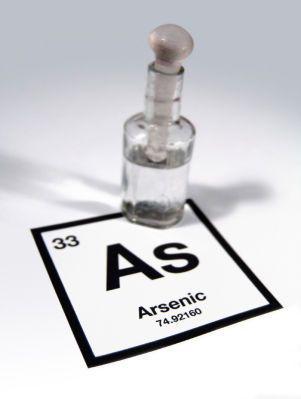
Metalloid arsenic has been used for centuries for all industries, from forging weapons to make up during the Victorian era (when the ladies appreciated painful pallor). In the Dark Ages it was the duty of poison murderers all over the world due to the fact that the symptoms of arsenic poisoning resemble cholera, spread disease at a time. It works by hitting the ATP enzyme in human cells, stopping the transfer of energy. Arsenic - an unpleasant substance, and in strong concentrations, it causes gastrointestinal disorders, convulsions, coma and death. In small quantities consumed constant (for example, from contaminated groundwater), it provokes a number of diseases, including cancer, heart disease and diabetes.
8. Lead
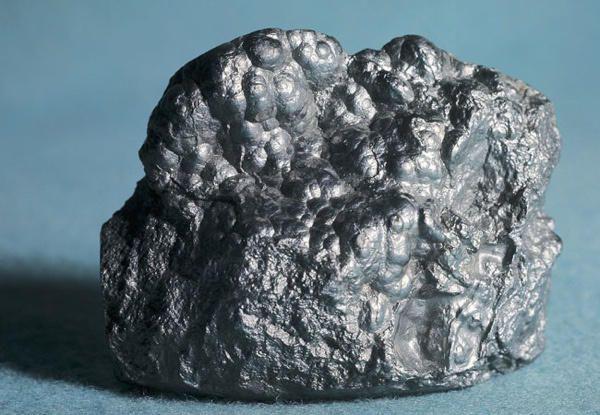
Lead is one of the first metals used by mankind, it was first smelted more than 8,000 years ago. And until the last few decades, we really had no idea how dangerous it is. Lead attacks every organ in the human body, and thus poisoning seen a huge number of symptoms ranging from diarrhea to mental retardation. Children are particularly susceptible: venom causes permanent neurological deficits during fetal development. Ironically, many criminologists believe that the decline in violent crime has occurred, at least in part, by increasing regulation of lead. Children born in 1980 and later subjected to considerably less exposure to lead, and as a result may be less prone to violence.
9. brodifacoum
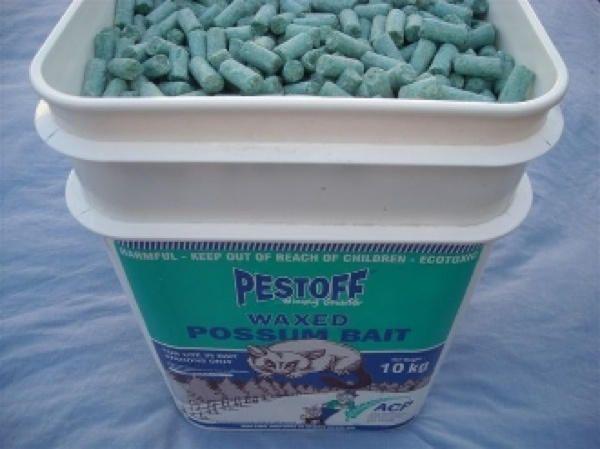
Immediately after World War II poison brodifacoum used to protect against rodents (and, oddly enough, as a means my blood, people with clotting disorders). But the rats born to survive, so over time, many have developed resistance to brodifacoum. Brodifacoum - extremely dangerous anticoagulant that works by reducing the amount of vitamin K in the blood. Because vitamin K is essential to the blood clotting process, eventually the body develops massive internal bleeding, blood leaks from small vessels. Brodifacoum, which is sold under various brand names such as Havoc, Talon, and Jaguar, should be used with caution, as it can easily penetrate the skin and remains in the body for several months.
10. Strychnine
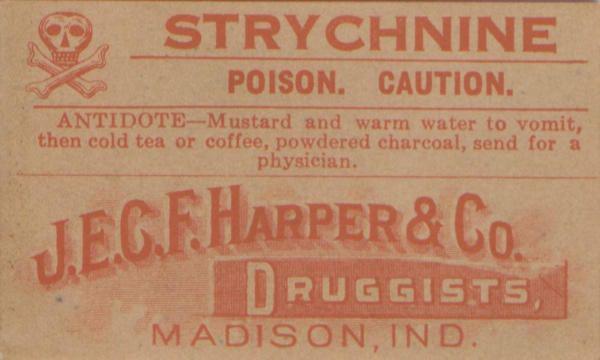
Mainly derived from the seeds of a tree Strychnos nux-vomica in India and Southeast Asia, it is a substance strychnine alkaloid used as a pesticide, especially for rodents. Death caused by strychnine is painful, as a neurotoxin affects the nerves of the spine, causing the body is distorted and there is a spasm when the muscles are compressed against their will. Oskar Dirlewanger, the commander of the Nazi SS during World War II, introduced its prisoners and looked at their convulsions for your perverted fun. Strychnine is one of the few substances in this list, which is quite cheap and is available for sale: he probably sold at a local store.

1.Tsianid hydrogen

Despite the terrible glory, cyanide has a rich and fruitful history. Some scientists even believe that he may have been one of the chemicals responsible for life on earth. Today he is best known as an agent of death, the active ingredient in Zyklon B, which the Nazis used for the extermination of Jews in gas chambers. Cyanide is a chemical used as capital punishment in the gas chambers of the United States. Those who come into contact with him, say that it smells sweet almonds. Cyanide kills by binding to the iron in our blood cells, taking away their ability to carry oxygen throughout the body. In most states, the United States had banned the use of the gas chamber, as too inhumane measure. Death can take a few minutes, and often terrible to watch as the convict beats in an attempt to prevent the death.
2. Hydrofluoric acid

A solution of hydrogen fluoride in water, hydrofluoric acid, are used in several industries such as steel and even in the manufacture of PTFE. There are acids, which are much more powerful than hydrofluoric, but few of them are dangerous to humans. In gaseous form, it can easily burn eyes and lungs, but in liquid form it is particularly insidious. When exposed to human flesh, it did not initially brings pain. The fact that it does not hurt, means that people may be exposed to grave danger, without even realizing it. It penetrates through the skin into the bloodstream where reacts with the calcium in the body. In the worst case, can seep through the fabric and ruin the major bones.
3. batrachotoxin

Fortunately for most of us, the chances of coming into contact with batrachotoxin extremely small. One of the most powerful neurotoxin in the world, it is the skin of tiny poisonous frogs drotikovyh. Frogs do not themselves produce the poison, it is created from the food that they eat, most likely kind of tiny beetles. There are several different versions depending on the species, but the most dangerous is the golden poison frog from Colombia. This little creature is small enough to fit on a finger tip, but one frog batrachotoxin enough to kill about two dozen people, or a pair of elephants. The toxin acts, affecting the nerves, opening the sodium channels and causing paralysis, essentially cutting off communication ability of the whole body with himself. There is no known antidote, and death comes quickly.
4. nerve gas VX

Prohibited Chemical Weapons Convention of 1993 (the world's reserves are being phased out), VX nerve agents is the most powerful gas in the world. He was found by accident in 1952 when a chemical test organophosphates, and soon was discovered and its danger. He originally went on sale as a pesticide called Amiton, but was withdrawn from sale because it was too dangerous to society. He soon attracted the attention of governments around the world, and, as it was during the Cold War had been stockpiled for potential use in the war. Fortunately, the draw hand did not tremble, and VX was never used in combat. Sectarians of the Japanese group Aum Shinrikiyo managed to create some volume of this gas and using it to kill a man, but it is the only known human death from VX. The substance works by stopping the production of the enzyme in the nerves, resulting in constant activity occurs "storm" in the nervous system that quickly overwhelms the body.
5. Agent Orange

Made Dow Chemical and Monsanto (which is a short list of corporations "evil" in the world), and almost everyone has heard of the defoliant Agent Orange. It used during the Vietnam War to destroy the trees that covered the enemy soldiers and destroy the culture in rural areas. Unfortunately, besides killing plants, herbicide contains a chemical called TCDD dioxin, a known carcinogen, which causes a significant increase in the incidence of cancer, especially lymphoma. In addition, tens of thousands of Vietnamese children were either stillborn or with birth defects, including cleft palate, additional fingers and toes, and mental retardation. Vietnam remains very contaminated to this day.
6. Ricin

Produced from castor bean, ricin is one of the most deadly poisons. Doses several small-sized grains of salt sufficient to kill an adult. It works by stopping the body's production of proteins that are necessary for survival, and throws the victim into shock. Because of its ease of manufacture, ricin was used as a weapon by many governments in the world and has been used at least once for murder when Bulgarian dissident writer Georgi Markov was shot pellet of ricin on the streets of London in 1978. It is believed that the responsibility for this murder carries a Bulgarian secret police and / or the KGB.
7. Arsenic

Metalloid arsenic has been used for centuries for all industries, from forging weapons to make up during the Victorian era (when the ladies appreciated painful pallor). In the Dark Ages it was the duty of poison murderers all over the world due to the fact that the symptoms of arsenic poisoning resemble cholera, spread disease at a time. It works by hitting the ATP enzyme in human cells, stopping the transfer of energy. Arsenic - an unpleasant substance, and in strong concentrations, it causes gastrointestinal disorders, convulsions, coma and death. In small quantities consumed constant (for example, from contaminated groundwater), it provokes a number of diseases, including cancer, heart disease and diabetes.
8. Lead

Lead is one of the first metals used by mankind, it was first smelted more than 8,000 years ago. And until the last few decades, we really had no idea how dangerous it is. Lead attacks every organ in the human body, and thus poisoning seen a huge number of symptoms ranging from diarrhea to mental retardation. Children are particularly susceptible: venom causes permanent neurological deficits during fetal development. Ironically, many criminologists believe that the decline in violent crime has occurred, at least in part, by increasing regulation of lead. Children born in 1980 and later subjected to considerably less exposure to lead, and as a result may be less prone to violence.
9. brodifacoum

Immediately after World War II poison brodifacoum used to protect against rodents (and, oddly enough, as a means my blood, people with clotting disorders). But the rats born to survive, so over time, many have developed resistance to brodifacoum. Brodifacoum - extremely dangerous anticoagulant that works by reducing the amount of vitamin K in the blood. Because vitamin K is essential to the blood clotting process, eventually the body develops massive internal bleeding, blood leaks from small vessels. Brodifacoum, which is sold under various brand names such as Havoc, Talon, and Jaguar, should be used with caution, as it can easily penetrate the skin and remains in the body for several months.
10. Strychnine

Mainly derived from the seeds of a tree Strychnos nux-vomica in India and Southeast Asia, it is a substance strychnine alkaloid used as a pesticide, especially for rodents. Death caused by strychnine is painful, as a neurotoxin affects the nerves of the spine, causing the body is distorted and there is a spasm when the muscles are compressed against their will. Oskar Dirlewanger, the commander of the Nazi SS during World War II, introduced its prisoners and looked at their convulsions for your perverted fun. Strychnine is one of the few substances in this list, which is quite cheap and is available for sale: he probably sold at a local store.
















